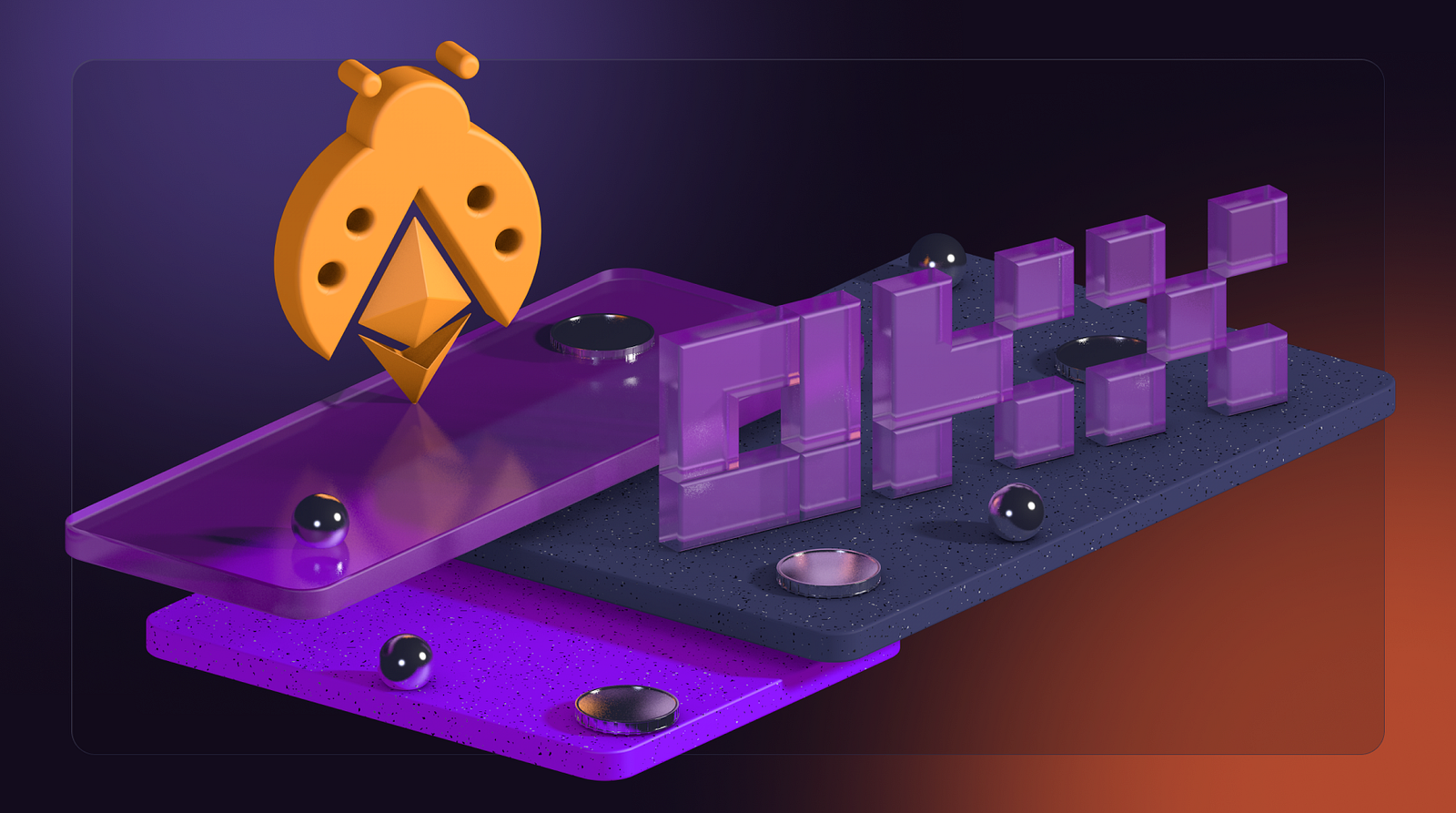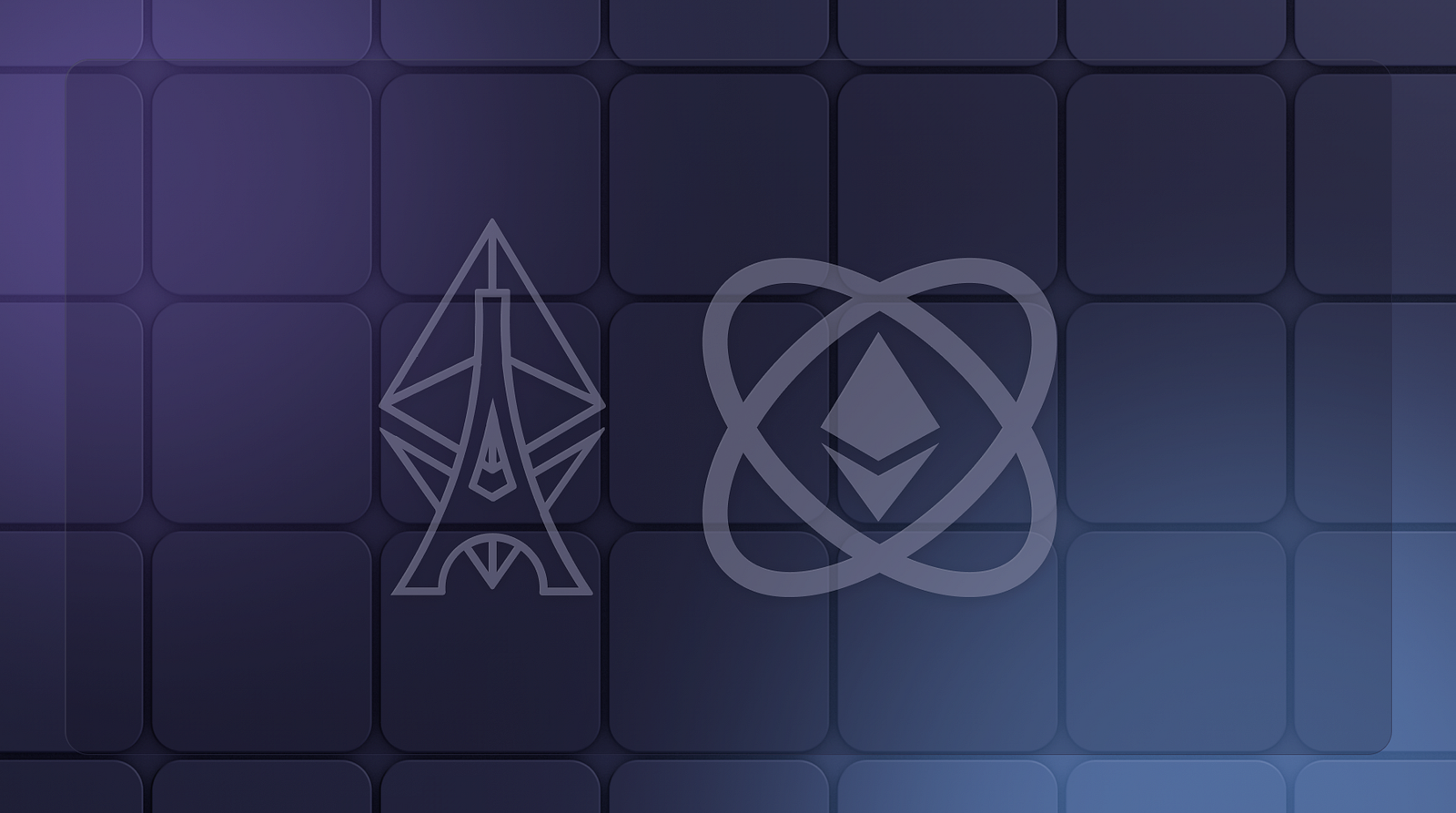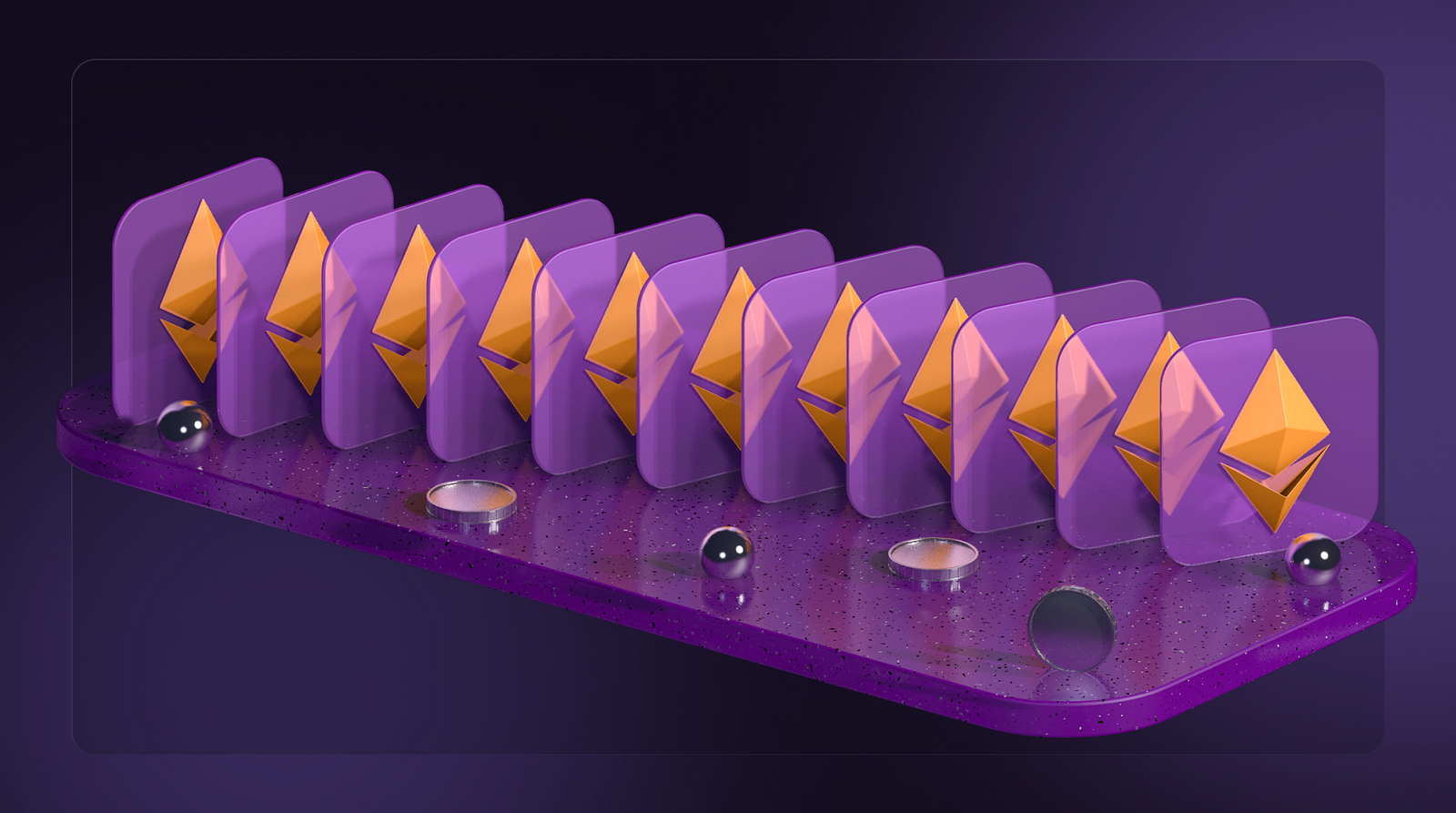Please fasten your belts!
Etherspot and OKX announce a strategic partnership
Etherspot and OKX have joined forces to enhance the OKT Chain (OKTC) with Account Abstraction and other innovative technologies.
This collaboration aims to empower the OKTC ecosystem’s developers, offering an array of groundbreaking tools to construct decentralized applications, games, and protocols with increased scalability, security, and user experience.
The alliance will enable Account Abstraction expansion on OKX’s native chain (OKTC), providing true interoperability and maximized performance.

Developers will benefit from various AA features, including meta-transactions;
- social logins;
- sponsored transactions;
- transaction batching;
- cross-chain bridging;
- fiat on and off-ramp.
All this will result in lowered gas fees.
Etherspot will serve as the recommended Account Abstraction wallet and infrastructure stack for those seeking to accelerate development on OKTC. Our comprehensive suite of developer tools, such as a smart contract wallet and primary SDK, will facilitate and speed up the development process.
Furthermore, developers can integrate the OKX DEX aggregator into their dApps. It consolidates prices and trade paths on over 100+ DEX and recommends optimal paths with low slippage.
Our partnership with OKX will advance Web3 infrastructure, empowering developers and fostering the adoption of Account Abstraction.
ERC4337 Core Devs call #14
The ERC4337 development team recently held a meeting to discuss various complexities within Ethereum’s ecosystem.
They settled on the Flashbots relay for testnet, a decision guided by a 60% validator participation rate. Gas estimation for Layer 2 solutions emerged as a challenging topic.
Signature aggregation, miner extractable value (MEV) protection, and the viability of P2P mempool across networks such as Arboretum, Optimism, and Polygon were also discussed.
The developers expressed their commitment to transparency, with minimal changes during updates.
The community can follow this link for updates on these significant developments within the Ethereum space.
New wallet launches on Optimism, allows crypto access via Twitter login
A new wallet Beam has launched on Optimism, introducing a series of innovative user experience features that promise to make crypto handling more accessible.
Developed by payments company Eco, and backed by leading venture capital firms, Beam operates in-browser without the need to be downloaded.
One standout feature of Beam is that it allows users to generate an address without storing seed words and even backs up the account using a standard Twitter login. This is made possible through the utilization of Web3Auth and AA technology, permitting the creation of seedless accounts.

Furthermore, Beam doesn’t require users to own Ether (ETH) to pay gas fees. Gas fees can instead be paid with the specific coin used in the transfer, a feature made possible by utilizing third-party “paymaster” accounts.
CEO Andy Bromberg refers to Beam as a “Superchain” wallet, highlighting its ability to interact across the OP Stack ecosystem and making it user-friendly.
As Bromberg stated, the wallet abstracts complicated aspects like chains, and addresses, marking a significant step in crypto adoption.
Beam will also be compatible with Coinbase’s Base network upon its official launch in August.
Consensys Report: Key insights from ETHCC and ETHGlobal Paris
Consensys recently published an article summarizing the discussions and groundbreaking insights that emerged from the Ethereum Community Conference (ETHCC) and ETHGlobal Paris, held from July 17 to July 23.
The events highlighted five critical takeaways:
#1. Layer 2s continue to scale Ethereum
Consensys emphasizes the crucial role of Layer 2 in Ethereum’s future scaling, marked by the Linea mainnet’s public release and over $23 million bridged in transactions.
#2. Maturing decentralized social media
The announcement of Lens V2, boasting 109,381 users as of April 2023, signifies progress in decentralized social networks, as per the Consensys report.

#3. Account Abstraction for mass adoption
Vitalik Buterin’s talk on account abstraction forecasts this feature as the driving force for mass adoption of Ethereum.
#4. Shift from infrastructure to application development
MetaMask creator draws attention to the emerging need to focus more on developing practical dApps rather than mere infrastructure, fostering broader adoption.
#5. Interoperability is key
The launch of the Chainlink Cross-Chain Interoperability Protocol (CCIP), mentioned by Consensys, emphasizes the necessity for seamless communication between blockchain networks.
New Multi-Owner Account feature on Starknet by Braavos
Braavos has introduced the Multi-Owner Account (MOA) feature on Starknet. This novelty moves past traditional multi-signature models in the cryptocurrency world, aiming to improve team collaboration with enhanced security, autonomous gas payments, and easy integration with decentralized applications.
The MOA is built to meet the needs of teams and organizations, allowing shared control over contracts and funds. Its key features include:
- Collaborative control — allows team members to manage transactions together.
- Dynamic ownership — easy options to add or remove owners as needed.
- Enhanced security — strong multi-factor authentication for added safety.
- Autonomous gas payments — — transactions pay their own gas fees.
- Smooth dApp integration — allows for simple connection with various decentralized applications.
Setting up a multi-owner account is straightforward, with options to either create a new account or join an existing one. Up to seven unique wallet addresses can be owners, and managing the account is hassle-free.
The MOA uses account abstraction to allow more secure collaboration, where each owner can have multi-factor authentication. A two-step process handles transactions, and security measures prevent potential threats, including gas drain attacks.
Braavos’ Multi-Owner Account differs from standard Safe multisig accounts by offering more flexibility, control, and enhanced security. It works like any other account but with extra features, making it easier to use on the Starknet platform.
While Starknet doesn’t currently support nonce abstraction (allowing multiple concurrent transactions without conflict), this is a minor issue, and it’s planned to be fixed in the future.
Braavos has also open-sourced the code, letting anyone review and verify the feature.
ERC-20 inventor unveils Lukso and shares thoughts on BRC-20
Fabian Vogelsteller, the person who helped create the ERC-20 standard, recently talked with Cointelegraph about his new project, Lukso.
He used to work with the Ethereum Foundation but left in 2018 to focus on something groundbreaking. so he created Lukso, a different kind of blockchain that is meant for everyday things like fashion, social media, and content creation.
Lukso started on May 23 and is similar to Ethereum in how it works. Already, 23,000 people are helping to validate it. Vogelsteller said he needed to make a new chain to bring in new people and help those involved early. Unlike Ethereum, Lukso is more about regular tasks and less about finance.

Vogelsteller also talked about why he made Lukso. His ex-wife had the idea to make a blockchain for fashion and lifestyle. Vogelsteller liked the idea and saw how it could be used by regular internet users, not just finance experts.
When asked about BRC-20 tokens, Vogelsteller laughed it off as a joke. He pointed out that Bitcoin is slow and has its limits. He also talked about Lukso’s ICO in 2019–2020, where people could get their money back if they wanted to.
Subscribe to Etherspot’s Everything About Account Abstraction Newsletter!
Start exploring Account Abstraction with Etherspot!
- Learn more about account abstraction here.
- Head to our docs and read all about the Etherspot SDK.
- Skandha - a developer-friendly Typescript ERC4337 Bundler.
- Explore our TransactionKit, a React library for fast & simple Web3 development.
- For a plug & play integration, review the BUIDLer react component.
- Follow us on Twitter and join our Discord.
Is your dApp ready for Account Abstraction? Check it out here: https://eip1271.io/
Get In Touch:
Website | Twitter | Discord | Github | Telegram
Powered by Etherspot
BUIDLer React Component | TransactionKit | Pillar Wallet | AirdropMe

